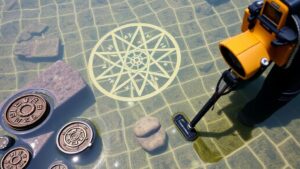Tips for Finding Coins in Abandoned Barns and Farm Fields
Tips for Finding Coins in Abandoned Barns and Farm Fields
Coin hunting, a popular hobby among treasure seekers, is a fascinating pursuit that often leads to the discovery of historical treasures. Abandoned barns and farm fields, which dot the rural landscapes of the United States and beyond, represent prime locations for individuals looking to find coins and other artifacts from a bygone era. In this article, we will explore important tips and strategies for maximizing your success in these unique environments.
Understanding the History
Before embarking on any coin-hunting adventure, it is essential to understand the historical context of the area. Many barns and farmfields have been in use for generations, and their histories can provide valuable clues about where to look.
- Research local history: Use local libraries, historical societies, and online archives to learn about the farmers and families that once occupied the area. Knowing their stories can guide your search.
- Look for old maps: Historical maps may show the original borders of farms, the locations of old barnyards, and more, which can lead you to hidden treasure hotspots.
Tools and Equipment
Having the right tools is crucial for successful coin hunting. A few must-have items include:
- Metal Detector: An essential tool for any serious coin hunter, a good quality metal detector can help you locate coins deep in the ground. Consider models with different frequency settings, which can detect varied metal types.
- Digging Tools: A small shovel or trowel will assist in unearthing treasures while minimizing damage to the surrounding soil.
- Finds Pouch: This handy accessory allows you to keep your discoveries organized and safe as you search.
Best Times to Hunt
Timing your coin hunting expeditions can greatly influence your success. Historical patterns and seasonal changes offer beneficial insights:
- Spring and Fall: These seasons typically provide the best conditions for hunting due to reduced vegetation. Grassy areas may have receded, making it easier to spot sunken objects.
- After Rain: Also, rain can soften the soil, allowing for easier digging and uncovering hidden coins that may have been buried deeper in the past.
Site Selection Strategies
When you arrive at an abandoned barn or farm field, your site selection can significantly affect what you find. Here are some strategies:
- Focus on High Traffic Areas: Look for spots where people would have congregated, like near barn entrances, along pathways, or near livestock enclosures.
- Examine Old Structures: Coins can often fall into cracks and crevices of old wooden structures, so thorough examination of these areas is advisable.
Legal Considerations and Etiquette
Before you start digging, it is vital to ensure that you are legally allowed to search the area. Here are some key points:
- Obtain Permission: Always seek permission from property owners. Some individuals may be open to allowing hunts on their land, especially if they see potential for shared discoveries.
- Respect the Land: Follow “Leave No Trace” principles. Fill in any holes you dig and leave the location as you found it, which can maintain friendly relations with landowners and the local community.
Documenting Your Finds
Keeping a record of your finds can enhance the enjoyment of coin hunting and could serve historical or monetary research purposes. Here are some methods:
- Photography: Take photos of both the coins and the location where you found them, which can help establish provenance and context.
- Record Keeping: Create a logbook detailing date, location, tools used, and outcomes. This information could be useful for future reference or sharing with other enthusiasts.
Conclusion
Finding coins in abandoned barns and farm fields can be a rewarding experience, combining history, adventure, and a little bit of luck. By understanding the area’s history, using the right tools, choosing optimal times to hunt, and employing careful site selection strategies, you can dramatically increase your chance of success. Always remember to respect the property and document your findings to enrich your journey.
So, gear up, do your research, and head out to discover the hidden treasures that await in rural landscapes.



